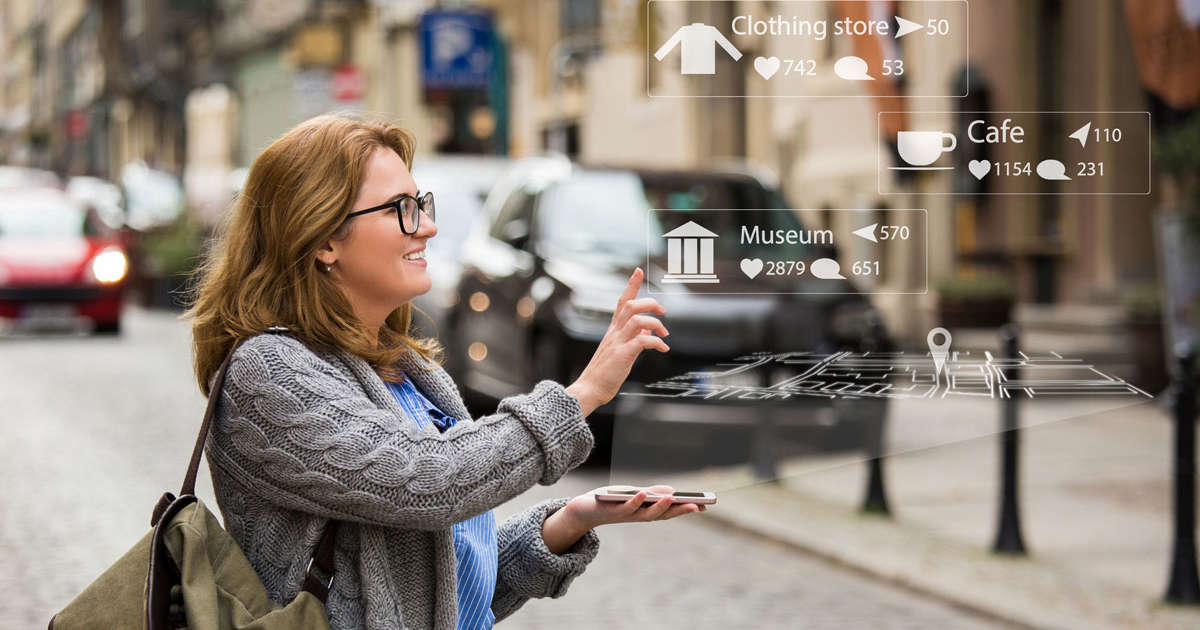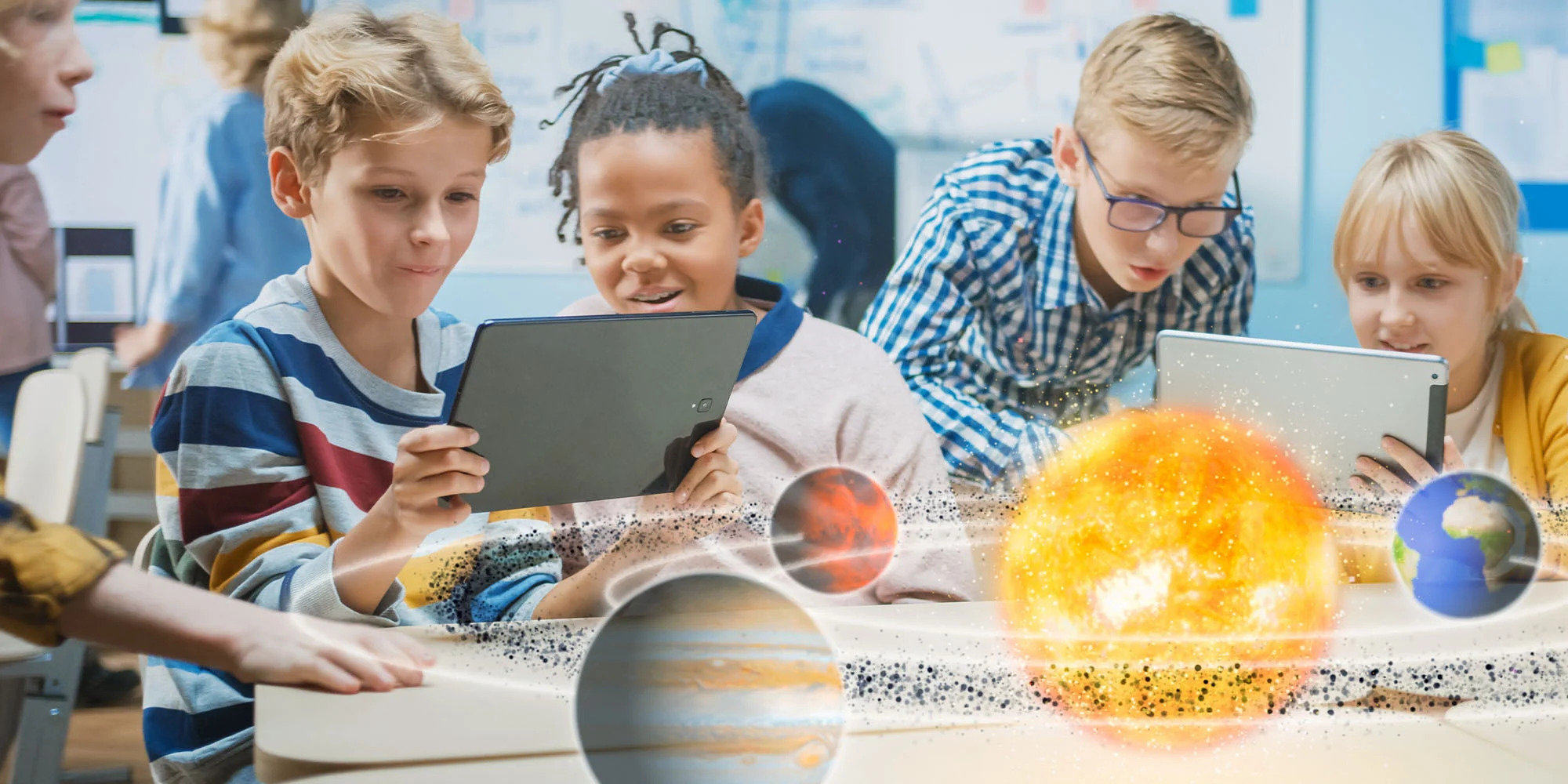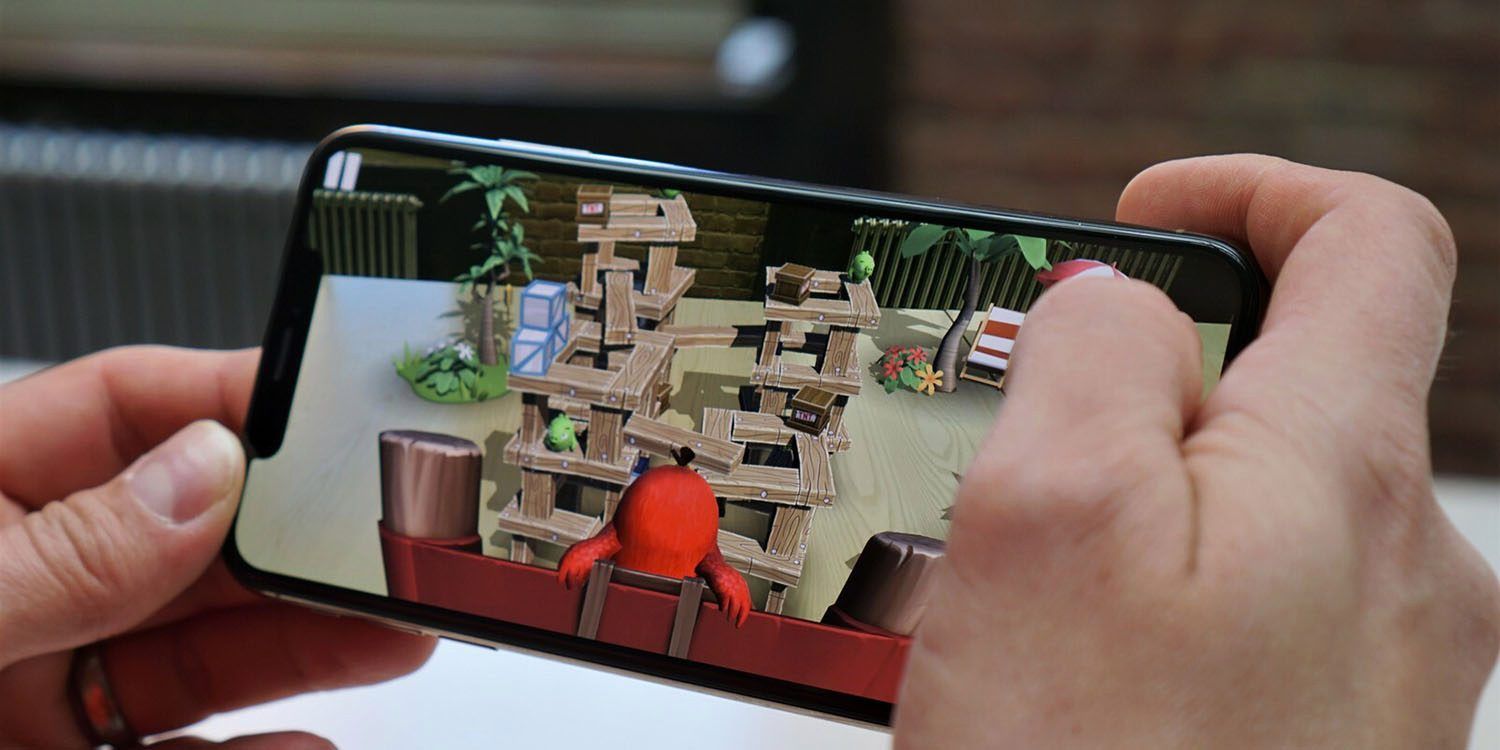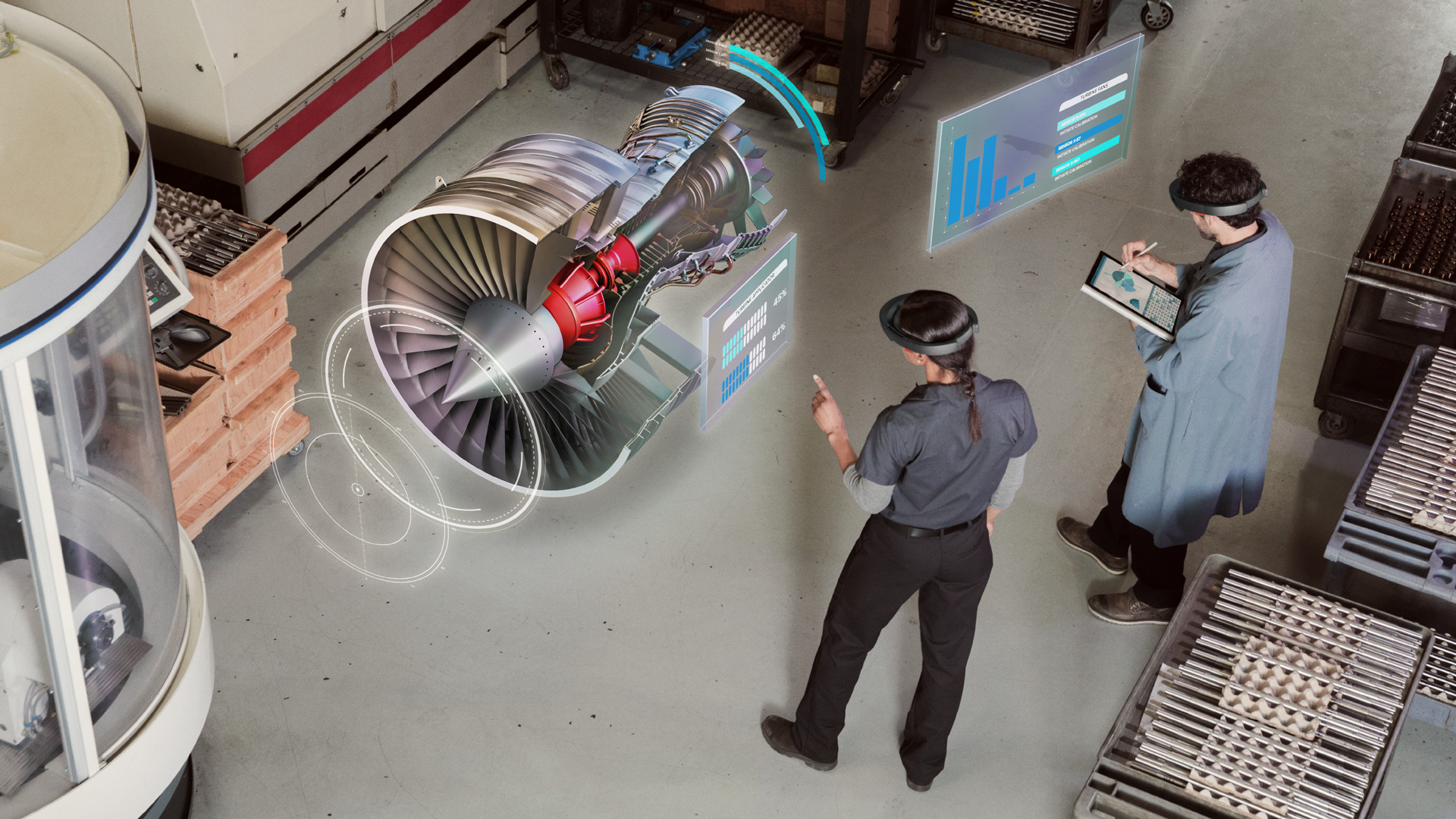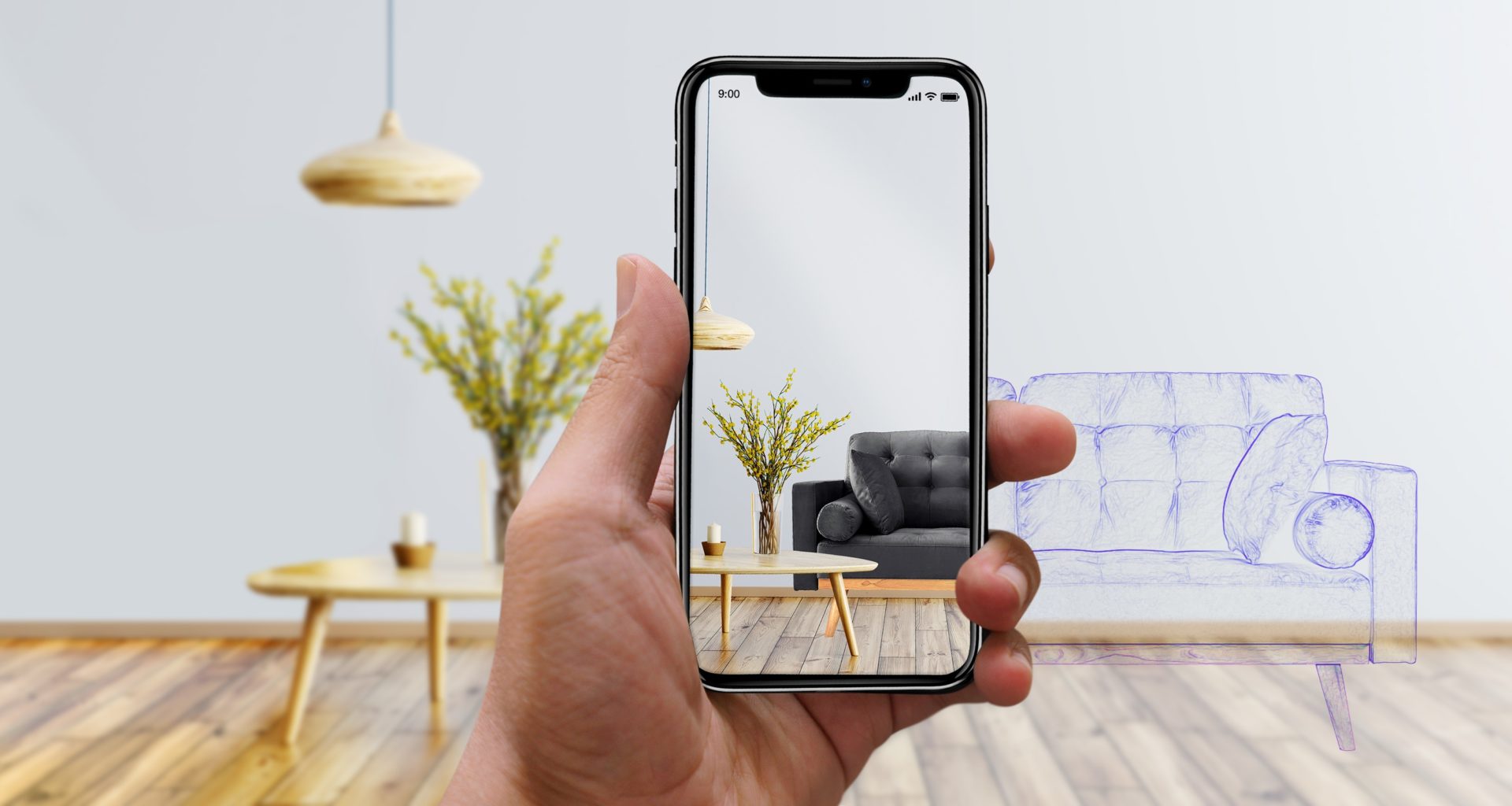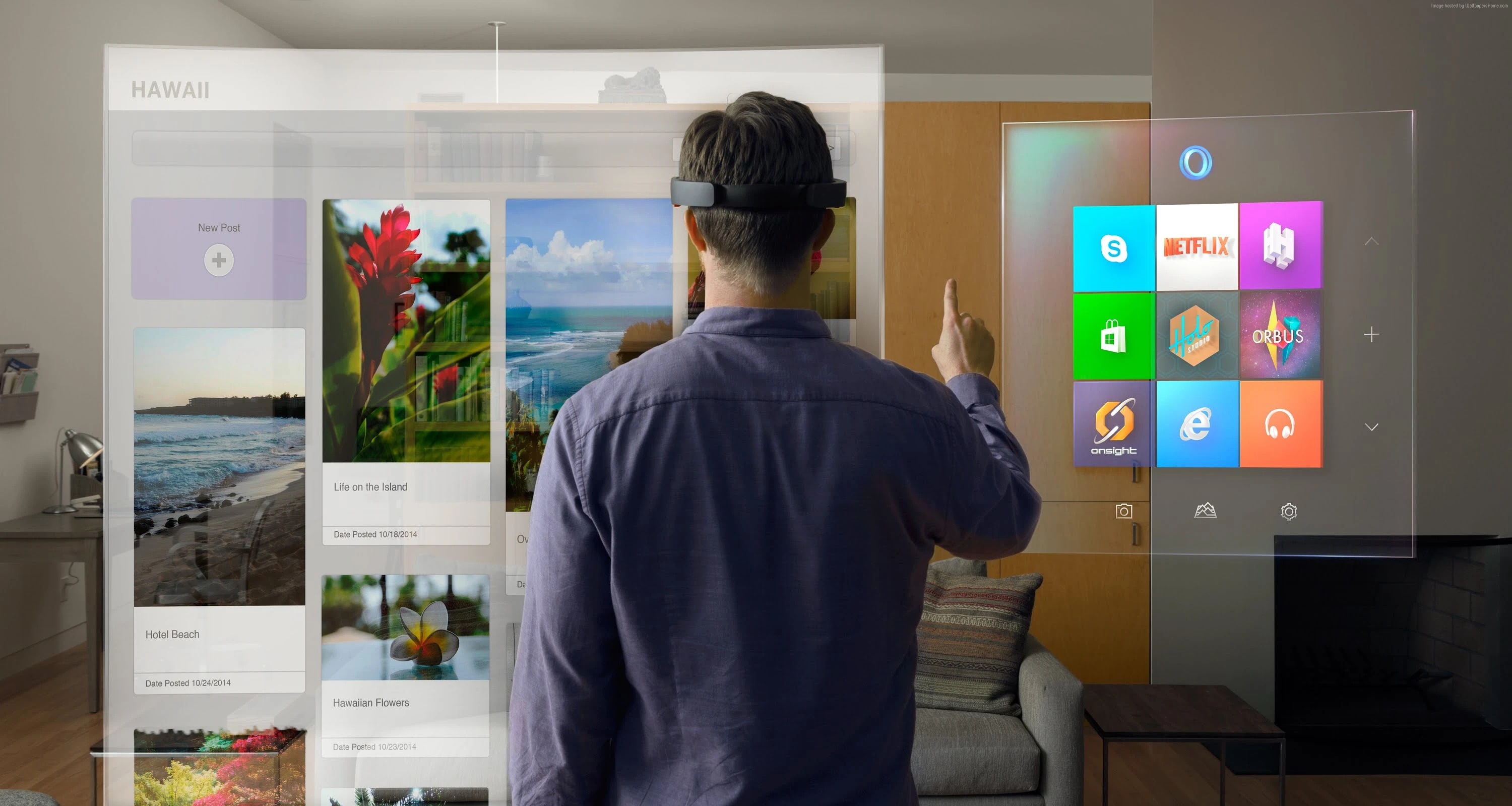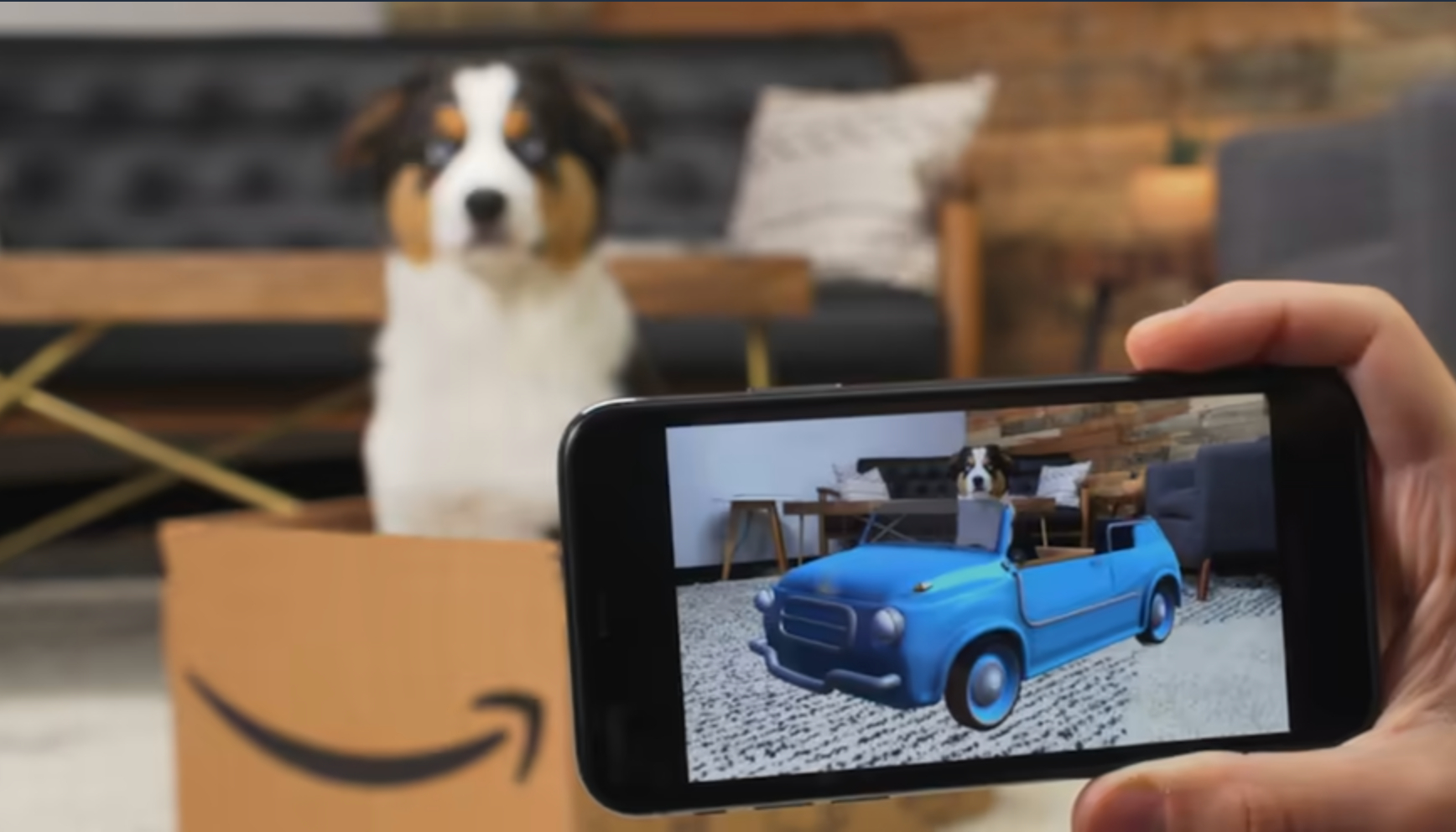Introduction
Augmented Reality (AR) is an innovative technology that blends digital information and virtual objects with the real-world environment. By overlaying computer-generated visuals onto the user’s view of the physical world, AR has the power to revolutionize various industries and enhance human experiences. From education and training to marketing and entertainment, the benefits of augmented reality are far-reaching and boundless.
One of the key advantages of AR is the enhanced learning opportunities it provides. Traditional educational methods can sometimes feel static and detached from real-world applications. However, AR allows students to interact with digital content and visualizations, making learning more immersive and engaging. Whether it’s taking a virtual tour of historical landmarks, exploring the human anatomy in 3D, or conducting science experiments in a simulated environment, AR opens up a whole new world of possibilities in education.
In the workplace, AR has the potential to boost productivity and efficiency. By overlaying contextual information onto physical objects or environments, AR can provide real-time guidance and instructions to employees. This technology can streamline complex processes, reduce errors, and speed up tasks that would otherwise require extensive training or referencing of manuals. For example, technicians can use AR glasses to receive step-by-step instructions while repairing machinery, eliminating the need for physical guides or constant back-and-forth communication.
Another benefit of AR is its ability to enhance customer engagement and satisfaction. In retail, AR applications allow customers to virtually try on clothes, accessories, or even visualize how furniture would look in their homes. This not only improves the buying experience but also reduces product returns. Additionally, AR can be used for interactive marketing campaigns, where brands can create immersive and memorable experiences for their target audience.
AR also provides enhanced visualization and spatial understanding. By overlaying digital graphics onto a physical environment, AR can help individuals better understand complex data, architectural designs, or even navigate unfamiliar locations. For example, in the construction industry, architects and engineers can use AR to visualize building plans in real-time, enabling them to identify and resolve potential issues before construction begins.
Enhanced Learning Opportunities
Augmented Reality (AR) technology has brought innovative solutions to the realm of education, offering enhanced learning opportunities for students of all ages. By seamlessly integrating virtual content into the real-world environment, AR can transform traditional learning methods and make educational experiences more engaging and immersive.
One of the primary benefits of AR in education is its ability to provide interactive and hands-on learning experiences. Instead of relying solely on textbooks and lectures, students can now visualize and interact with 3D models and simulations. Whether it’s exploring the solar system, dissecting virtual organisms, or conducting virtual chemistry experiments, AR allows students to actively engage with the subject matter, making it easier to grasp complex concepts.
AR also offers personalized learning experiences tailored to the individual needs of students. Through AR applications and devices, such as smartphones or AR headsets, students can access customized learning materials and receive real-time feedback. This level of personalization ensures that each student can learn at their own pace and in a way that suits their learning style, ultimately leading to better educational outcomes.
Furthermore, AR can bridge the gap between theoretical knowledge and practical application. For example, in fields such as engineering or medicine, AR can provide simulated scenarios and virtual training environments. This allows students to practice and refine their skills in a safe and controlled setting, without the need for expensive equipment or risking real-world consequences. As a result, students can gain valuable hands-on experience and develop a deeper understanding of their chosen field.
Another advantage of AR in education is its potential for collaborative learning. With AR, students can participate in interactive group activities and simulations, regardless of their physical location. This enables remote collaboration between students from different schools or even different parts of the world. By fostering collaboration and teamwork, AR promotes social interaction and the exchange of ideas, enhancing the overall learning experience.
Moreover, AR can break down barriers to education by providing access to educational resources that may otherwise be unavailable. For students in remote or underserved areas, AR can bring educational content and experiences that would otherwise be out of reach. This democratization of education ensures that all students, regardless of their geographical location or socioeconomic background, have equal opportunities to learn and thrive.
Improved Productivity in the Workplace
Augmented Reality (AR) technology is revolutionizing the way businesses operate, offering numerous benefits in terms of productivity and efficiency. By harnessing the power of AR, companies can streamline processes, provide real-time assistance, and enhance the overall productivity of their workforce.
One of the key advantages of AR in the workplace is its ability to provide contextual information and guidance to employees. For instance, AR glasses or headsets can overlay digital instructions or visual cues onto the employee’s field of view. This eliminates the need for constant referencing of manuals or instructions, allowing employees to remain focused on their tasks, thereby reducing errors and increasing productivity.
AR can also optimize complex processes by providing step-by-step guidance and support. For example, in manufacturing or assembly lines, AR can assist workers in following the correct sequence of tasks, reducing the time required for training and minimizing errors. This enhanced guidance ensures that employees can perform their jobs more efficiently, resulting in increased productivity and improved overall quality.
Moreover, AR can facilitate remote collaboration and support. With AR-enabled devices, employees can access real-time expertise and guidance from remote experts. This is particularly beneficial for tasks that require specialized knowledge or troubleshooting. By providing remote assistance, AR not only saves time but also improves problem-solving capabilities, ultimately boosting productivity and reducing downtime.
AR can also enhance training programs and onboarding processes within organizations. Instead of relying solely on traditional classroom-style training, AR can provide interactive and immersive learning experiences. New employees can use AR to familiarize themselves with their roles, learn processes, and receive on-the-job training. This hands-on approach to training leads to faster learning and greater retention, resulting in a more competent and productive workforce.
Another advantage of AR in the workplace is its potential to improve collaboration and communication among team members. By overlaying virtual elements onto the physical environment, AR can facilitate shared understanding and visual communication. This enables teams to collaborate more effectively, streamline decision-making processes, and ultimately increase productivity.
Furthermore, AR can optimize inventory management and logistics by providing real-time data and information. Through AR-enabled devices, employees can access inventory levels, location information, and order details instantly. This ensures accurate inventory tracking, reduces errors, and improves overall efficiency in supply chain management.
Overall, the implementation of AR technology in the workplace can significantly improve productivity by providing real-time assistance, streamlining processes, and enhancing collaboration and communication among employees.
Enhanced Customer Engagement and Satisfaction
Augmented Reality (AR) has emerged as a powerful tool for businesses to engage with their customers and enhance overall satisfaction. By integrating digital content into the physical world, AR offers unique and immersive experiences that captivate customers and leave a lasting impression.
One of the key benefits of AR in terms of customer engagement is its ability to provide interactive and personalized experiences. Retailers can leverage AR technology to create virtual fitting rooms, allowing customers to try on clothes or accessories without physically being present in the store. This not only enhances convenience but also increases customer engagement, as they can visualize how products will look before making a purchase.
Furthermore, AR can transform traditional marketing campaigns into interactive and memorable experiences. Companies can develop AR-powered advertisements or promotional materials that come to life when viewed through a mobile device or AR glasses. This dynamic and immersive approach to marketing captures the attention of customers, increasing brand engagement and leaving a lasting impression in their minds.
AR also offers opportunities for businesses to showcase products in a unique and innovative way. For example, in the real estate industry, AR can create virtual property tours, allowing potential buyers to explore and visualize homes or apartments before scheduling in-person visits. This not only saves time for both the buyer and seller but also enhances the customer’s experience, leading to higher satisfaction and more informed purchasing decisions.
In addition, AR can enhance the customer support and troubleshooting process. By using AR-enabled devices, support agents can guide customers through step-by-step instructions in a virtual environment, helping them resolve issues efficiently. This reduces the need for lengthy phone calls or physical visits, saving both the customer and the business valuable time and resources.
AR can also empower businesses to provide post-purchase support and information in a more engaging manner. For instance, companies can use AR to overlay user manuals or instructional videos onto products, enabling customers to easily access and understand usage instructions. This interactive approach simplifies the learning process, improves customer satisfaction, and reduces the likelihood of product returns or negative reviews.
Moreover, by offering unique and immersive AR experiences, businesses can differentiate themselves from competitors and build brand loyalty. When customers have positive and memorable experiences with a brand, they are more likely to become repeat customers and advocates for the company, leading to increased customer loyalty and positive word-of-mouth referrals.
Overall, AR technology enables businesses to engage with customers on a deeper level, offering interactive and personalized experiences that enhance satisfaction, increase brand engagement, and foster long-term customer loyalty.
Enhanced Visualization and Spatial Understanding
Augmented Reality (AR) technology has revolutionized the way we visualize and understand information in various fields. By overlaying digital content onto the real world, AR enhances visualizations and spatial understanding, allowing individuals to interact with and comprehend complex data or environments in a more intuitive and immersive manner.
One of the primary benefits of AR in terms of visualization is its ability to bring data to life. Instead of analyzing data through spreadsheets or graphs, AR can transform numbers and figures into interactive visualizations. For example, in the field of data analysis, AR can create 3D graphs and charts that can be explored and manipulated in real-time. This not only enhances the understanding of data but also enables users to identify patterns and insights that may have been missed in traditional 2D representations.
AR also facilitates architectural and interior design processes by providing realistic visualizations of structures and spaces. Architects and designers can use AR to overlay virtual models onto physical spaces, allowing clients to visualize how a building or interior design concept will look in real life. This enhances communication and decision-making, as clients can have a better understanding of the final outcome before construction or implementation begins.
Furthermore, AR can improve spatial understanding by providing contextual information and guidance in real-time. For example, in navigation applications, AR can overlay directions and points of interest onto the user’s field of view, making it easier to navigate and explore unfamiliar areas. This enhances spatial awareness and reduces the likelihood of getting lost or missing important locations.
In the educational field, AR can revolutionize how students learn about geography, history, and other subjects that involve spatial understanding. By overlaying historical maps, virtual reconstructions, or geographical information onto the real world, AR enables students to explore and understand concepts in a more hands-on and immersive way. This promotes a deeper understanding of spatial relationships and enhances the learning experience.
In addition, AR can benefit industries such as manufacturing and engineering by providing spatial guidance in the form of augmented work instructions. By overlaying digital annotations and markers onto physical objects, AR enables workers to accurately position components and perform complex assembly tasks with precision. This not only reduces errors but also improves productivity and efficiency.
Moreover, AR can assist in training and simulation scenarios where spatial understanding is crucial. Military personnel, emergency responders, and pilots can benefit from AR technology to simulate real-world environments and practice critical operations. This immersive training enhances spatial awareness, decision-making, and performance in high-pressure situations.
Overall, AR enhances visualization and spatial understanding, making it easier to interpret and interact with complex data, navigate physical spaces, and learn about spatial concepts in a more immersive and intuitive way.
Real-time Data Tracking and Analysis
Augmented Reality (AR) technology offers a transformative solution for real-time data tracking and analysis, providing businesses with valuable insights and enhancing decision-making processes. By overlaying digital information onto the physical environment, AR enables users to access and interpret data in real-time, improving efficiency, accuracy, and overall productivity.
One of the key advantages of AR in terms of data tracking is its ability to provide real-time updates and notifications. AR-enabled devices can display live data feeds, such as stock prices, weather updates, or traffic information, directly within the user’s field of view. This allows users to stay updated on important information without the need to constantly refer to separate devices or applications, ultimately saving time and streamlining decision-making processes.
AR also offers visual cues and indicators to assist users in data tracking and analysis. For example, in manufacturing or logistics operations, AR can overlay data on physical objects or equipment, such as inventory levels, maintenance schedules, or quality control metrics. This real-time visualization ensures that employees have accurate and up-to-date information at their fingertips, minimizing errors and optimizing operational efficiency.
Furthermore, AR can facilitate data analysis by providing interactive and immersive visualizations. Instead of relying on static charts or graphs, AR can transform data into dynamic 3D models or interactive dashboards. Users can manipulate and explore these visualizations, allowing for a deeper understanding of complex data sets and patterns. This facilitates data-driven decision-making and enhances the ability to identify trends and insights.
In addition, AR can assist in data tracking and analysis in the field of healthcare. AR can overlay patient information, vital signs, or medical records onto the field of view of healthcare professionals, enabling them to access critical data in real-time. This improves the accuracy of diagnoses, enhances patient care, and reduces the risk of errors.
AR also has the potential to revolutionize data tracking and analysis in the retail industry. By using AR-enabled devices or applications, retailers can track customer preferences, browsing habits, and purchase history in real-time. This valuable data can be used to personalize marketing efforts, improve customer targeting, and enhance overall customer satisfaction.
Moreover, AR can enable remote data tracking and analysis through the use of IoT (Internet of Things) devices and sensors. By overlaying real-time data from connected devices, AR can provide users with instant insights and control over various processes and systems. This remote monitoring capability improves efficiency, enables proactive maintenance, and enhances overall operational control.
Overall, AR technology enhances real-time data tracking and analysis by providing real-time updates, visual cues, immersive visualizations, and remote monitoring capabilities. By leveraging AR, businesses can optimize decision-making processes, improve operational efficiency, and gain valuable insights from data in real-time.
Opportunities for Creativity and Innovation
Augmented Reality (AR) technology opens up a world of possibilities for creativity and innovation across various industries. By blending digital content with the real world, AR offers new avenues for expression, interaction, and problem-solving, fostering creativity and pushing the boundaries of innovation.
AR provides artists, designers, and content creators with a unique platform to showcase their creativity. Through AR applications and experiences, artists can transform physical spaces into immersive art installations, merging the virtual and physical realms. This breaks traditional boundaries of art and allows for interactive and dynamic artistic experiences, captivating audiences in new and exciting ways.
Furthermore, AR enables designers to visualize and prototype ideas in a more immersive and realistic manner. With AR, designers can overlay virtual designs onto physical environments, allowing them to see how products or structures will look and function in real-world settings. This enhances the design process, enabling designers to iterate and refine their concepts before the physical implementation stage, ultimately saving time, resources, and reducing the risk of costly mistakes.
AR also fosters innovation by providing a platform for interactive storytelling and narrative experiences. With AR, creators can craft immersive narratives that incorporate the physical environment, engaging users in unique and memorable ways. This opens up new possibilities for entertainment, marketing, and education, creating engaging experiences that blur the lines between reality and fiction.
Moreover, AR offers opportunities for gamification, transforming the way we play and learn. By integrating virtual elements into real-world environments, AR games can provide engaging and interactive experiences that encourage physical activity, problem-solving, and exploration. This gamified approach to learning and entertainment sparks creativity and promotes innovation in game design and development.
AR also has the potential to revolutionize product development and customization. Businesses can use AR to allow customers to visualize and customize products in real-time. For example, in the furniture industry, AR applications can enable customers to virtually place furniture in their homes and see how it fits and matches with the existing décor. This level of customization fosters creativity and innovation by empowering customers to personalize products according to their unique preferences.
Furthermore, AR can be a powerful tool for training and simulation, offering realistic and immersive environments for professionals to practice and refine their skills. This can be particularly valuable in industries where safety and precision are critical, such as healthcare, aviation, or manufacturing. By using AR-enabled simulations, professionals can enhance their expertise, creativity, and problem-solving abilities in a controlled and risk-free environment.
Overall, AR technology provides endless opportunities for creativity and innovation. By merging the virtual and physical worlds, AR fosters new forms of artistic expression, enhances the design process, enables interactive storytelling, gamifies learning experiences, revolutionizes product development, and facilitates realistic training simulations. The possibilities are vast, and AR continues to push the boundaries of what is creatively and innovatively possible.
Increased Safety and Efficiency in Industrial Settings
Augmented Reality (AR) technology has emerged as a powerful tool to enhance safety and efficiency in various industrial settings. By overlaying digital information onto the physical environment, AR improves situational awareness, provides real-time guidance, and streamlines processes, ultimately minimizing risks and optimizing productivity.
One of the key benefits of AR in industrial settings is its ability to enhance safety protocols and procedures. By using AR-enabled devices, workers can access real-time safety information, such as hazard warnings, emergency evacuation routes, or equipment operating instructions. This ensures that employees are well-informed and can make informed decisions, reducing the likelihood of accidents or injuries.
AR can also provide real-time guidance and assistance to workers, minimizing errors and increasing efficiency. For instance, in manufacturing or assembly lines, AR can overlay digital instructions or visual cues onto the worker’s field of view, guiding them through complex tasks or assembly processes. This reduces the need for extensive training and enables workers to perform tasks more accurately and efficiently.
In addition, AR can facilitate remote support and maintenance. By using AR-enabled devices, technicians can receive real-time guidance from remote experts, reducing the need for physical presence and expensive travel. This remote support capability improves response times, reduces downtime, and enhances overall efficiency in maintenance and troubleshooting tasks.
AR technology can also enhance training programs and onboarding processes, especially for high-risk industries. By overlaying virtual objects or simulations onto the physical environment, AR provides realistic and immersive training experiences. This allows employees to practice critical tasks or emergency procedures in a safe and controlled environment. As a result, workers gain valuable experience, develop muscle memory, and are better prepared to handle challenging situations, ultimately improving overall safety and efficiency.
Moreover, AR can optimize logistics and warehouse operations. By overlaying digital information onto products or storage locations, AR enables workers to accurately identify and locate items, streamlining pick-and-pack processes. This reduces errors, minimizes inventory loss, and enhances overall operational efficiency in the supply chain.
Furthermore, AR technology can augment equipment maintenance and repairs. By overlaying digital instructions or visualizations onto machinery, technicians can perform maintenance tasks more efficiently, ensuring that they are following the correct procedures and using the right tools. This results in improved equipment uptime, reduced maintenance costs, and enhanced overall productivity.
Overall, AR technology plays a crucial role in increasing safety and efficiency in industrial settings. By providing real-time information, guidance, and support, AR enhances situational awareness, reduces the likelihood of accidents, and improves the efficiency of various tasks and processes. With its ability to optimize training, maintenance, and logistics workflows, AR is transforming how industries operate, ensuring safer and more efficient operations.
Enhanced Training Experiences
Augmented Reality (AR) technology has revolutionized the field of training by offering enhanced learning experiences that are immersive, interactive, and highly effective. By blending digital content with the real world, AR provides a unique platform for hands-on learning, simulations, and practical training, ultimately improving knowledge retention and skill acquisition.
One of the key benefits of AR in training is its ability to create realistic and immersive simulations. AR can overlay virtual objects or scenarios onto the real world, allowing trainees to practice tasks and procedures in a safe and controlled environment. For example, in medical training, AR can provide virtual patient simulations, enabling aspiring doctors and nurses to gain hands-on experience with diagnosis, surgeries, and emergency care.
In addition, AR can provide instant feedback and guidance during training sessions. By using AR-enabled devices or applications, trainees can receive real-time instructions, annotations, or suggestions as they perform tasks. This immediate feedback helps identify errors or areas for improvement, enabling trainees to enhance their skills in real-time and accelerate the learning process.
AR also fosters a sense of engagement and interactivity in training programs. Rather than relying solely on textbooks or lectures, trainees can interact with dynamic and virtual content, fostering active learning and increased knowledge retention. This level of engagement keeps trainees motivated, enhances their understanding of complex concepts, and facilitates the transfer of knowledge to practical applications.
Furthermore, AR can bridge the gap between theoretical knowledge and practical application. Trainees can use AR applications or devices to visualize abstract concepts and see their real-world applications. This helps connect theoretical knowledge with real-world scenarios, enhancing comprehension and enabling trainees to grasp the practical implications of what they are learning.
AR also enables remote training and collaboration. With AR, trainees and instructors can connect virtually, regardless of their physical location. This expands opportunities for training, allowing organizations to deliver training programs to employees spread across different regions. AR-powered virtual classrooms facilitate interactive discussions, demonstrations, and hands-on exercises, promoting collaboration and an immersive learning experience.
Moreover, AR can revolutionize on-the-job training by providing real-time guidance and support to employees. Through AR-enabled devices, workers can access information, instructions, or troubleshooting guidance, ensuring that they have the necessary resources at their fingertips. This reduces the learning curve and minimizes errors, resulting in faster onboarding and improved job performance.
AR technology also offers the potential for personalized learning experiences. By using AR-enabled devices, trainees can access customized training materials and tailored instructions based on their individual learning needs. This adaptive learning approach ensures that trainees can learn at their own pace and focus on areas that require additional attention, ultimately optimizing the training experience and improving outcomes.
Overall, AR technology enhances training experiences by providing immersive simulations, instant feedback, interactivity, practical applications, remote training capabilities, real-time guidance, and personalization. With AR, organizations can deliver more effective, engaging, and efficient training programs, ensuring that employees acquire the necessary skills and knowledge to succeed in their roles.
Improved User Experience in Tourism and Travel
Augmented Reality (AR) technology has transformed the tourism and travel industry, enhancing the overall user experience and revolutionizing the way people explore and interact with destinations. By overlaying digital information onto the physical world, AR provides travelers with valuable insights, interactive experiences, and enhanced navigation, ultimately creating more immersive and memorable travel experiences.
One of the key benefits of AR in tourism and travel is its ability to offer virtual tours and guides. Through AR-enabled applications or devices, travelers can access virtual information and guides about landmarks, museums, historical sites, and other points of interest. This allows users to explore and learn about their surroundings in a self-guided and interactive manner, enhancing their understanding and appreciation of the destination.
Furthermore, AR enhances navigation and wayfinding for travelers. AR can overlay directions, maps, and points of interest onto the user’s field of view, making it easier to navigate unfamiliar areas and discover hidden gems. This real-time guidance eliminates the need for paper maps or constantly checking a smartphone, allowing travelers to navigate more confidently and conveniently, and enabling them to fully immerse themselves in the travel experience without distractions.
AR also offers opportunities for cultural enrichment and historical exploration. Travelers can use AR to access augmented information about historical events, landmarks, or cultural traditions, enabling them to gain deeper insights and appreciate the rich heritage of the destination. This interactive approach to learning and exploration enhances the overall travel experience and leaves a lasting impression.
Additionally, AR enhances the accessibility and inclusivity of travel experiences. Through AR, travelers with disabilities can access augmented information and experiences that cater to their specific needs. For example, AR applications can provide audio descriptions or sign language translations for individuals with visual or hearing impairments, ensuring that they can fully engage with and enjoy the travel experience.
AR also enhances the booking and pre-travel phase for travelers. By using AR-enabled applications or websites, travelers can virtually experience hotels, accommodations, or destinations before making their bookings. This helps manage expectations and makes the decision-making process more informed, resulting in a higher level of customer satisfaction.
Moreover, AR offers opportunities for businesses in the tourism and travel industry to engage with customers through interactive marketing experiences. By leveraging AR, businesses can create immersive and interactive campaigns that allow customers to virtually experience activities, attractions, or accommodations. This virtual preview sparks interest and excitement, encouraging travelers to book their trips and enhancing their anticipation for their upcoming travel experiences.
Furthermore, AR can facilitate language translation and communication in an immersive and real-time manner. By using AR-enabled devices, travelers can translate signs, menus, or conversations in real-time, overcoming language barriers and enhancing communication with locals, ultimately promoting authentic cultural exchanges and interactions.
Overall, AR technology significantly improves the user experience in tourism and travel by offering virtual tours, enhancing navigation and wayfinding, providing cultural enrichment, enhancing accessibility, facilitating pre-travel experiences, enabling interactive marketing campaigns, and bridging language barriers. By leveraging AR, the tourism and travel industry can create more engaging, informative, and enjoyable experiences for travelers, promoting unforgettable journeys and fostering a deeper connection with destinations.
Conclusion
Augmented Reality (AR) technology has revolutionized various industries by providing a multitude of benefits and transforming user experiences. From education and training to tourism and industrial settings, the applications of AR are vast and continue to expand.
AR offers enhanced learning opportunities by providing interactive and immersive experiences that engage students and promote active learning. It bridges the gap between theoretical knowledge and practical application, empowering learners with a deeper understanding of complex concepts.
In the workplace, AR improves productivity by streamlining processes, providing real-time guidance, and fostering collaboration among team members. It enhances customer engagement and satisfaction by offering interactive and personalized experiences, ultimately building brand loyalty and increasing customer satisfaction.
AR also enhances visualization and spatial understanding, enabling users to interact with and comprehend complex data or environments in a more intuitive and immersive manner. It offers real-time data tracking and analysis, boosting decision-making processes and efficiency across industries.
Furthermore, AR provides opportunities for creativity and innovation, empowering artists, designers, and content creators to showcase their talents in unique and interactive ways. It enhances training experiences by offering immersive simulations, instant feedback, and personalization, ensuring that employees acquire skills and knowledge effectively.
In tourism and travel, AR enriches the user experience by providing virtual tours, enhanced navigation, cultural exploration, and inclusive experiences. It enhances pre-travel phases, allowing travelers to make informed decisions and manage their expectations.
Overall, AR has transformed industries by enhancing user experiences, improving efficiency, and fostering innovation. As technology continues to evolve, the potential for AR to revolutionize various sectors only continues to grow. Businesses and individuals alike should embrace AR and explore its endless possibilities to unlock new levels of creativity, productivity, and engagement.







